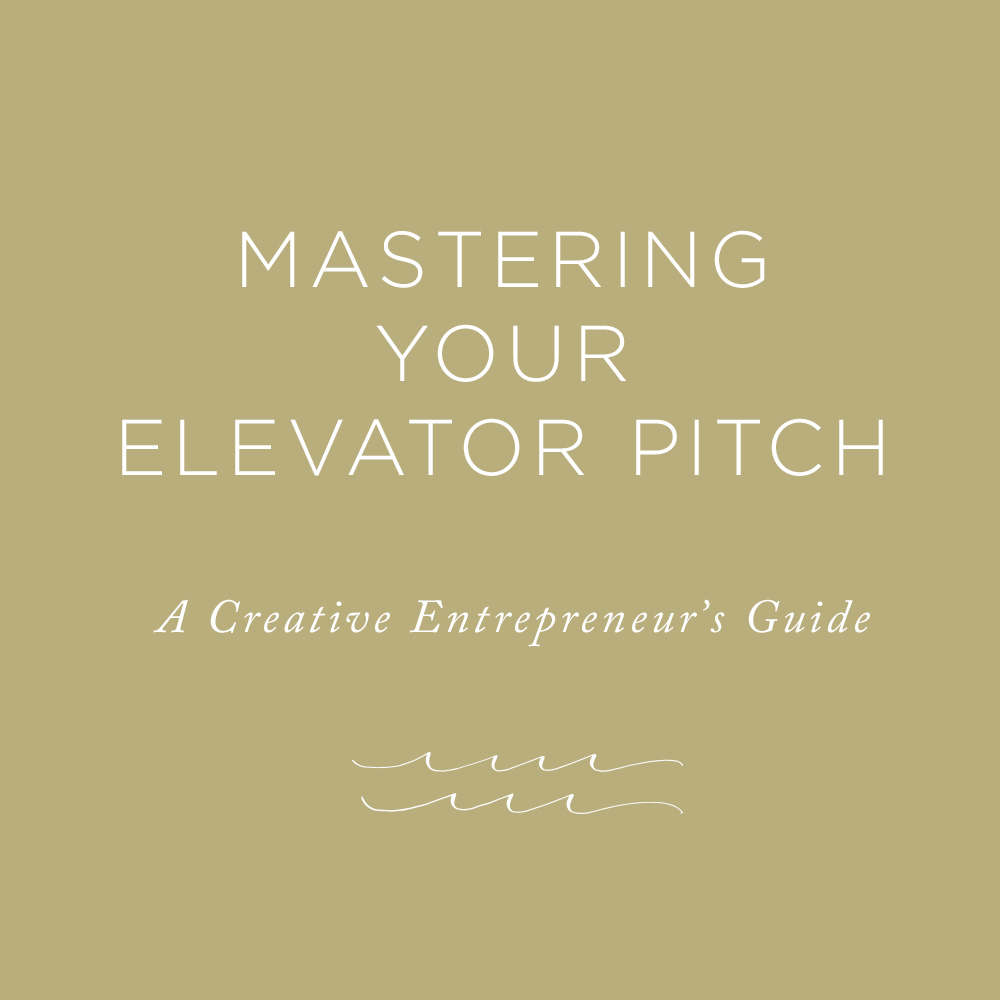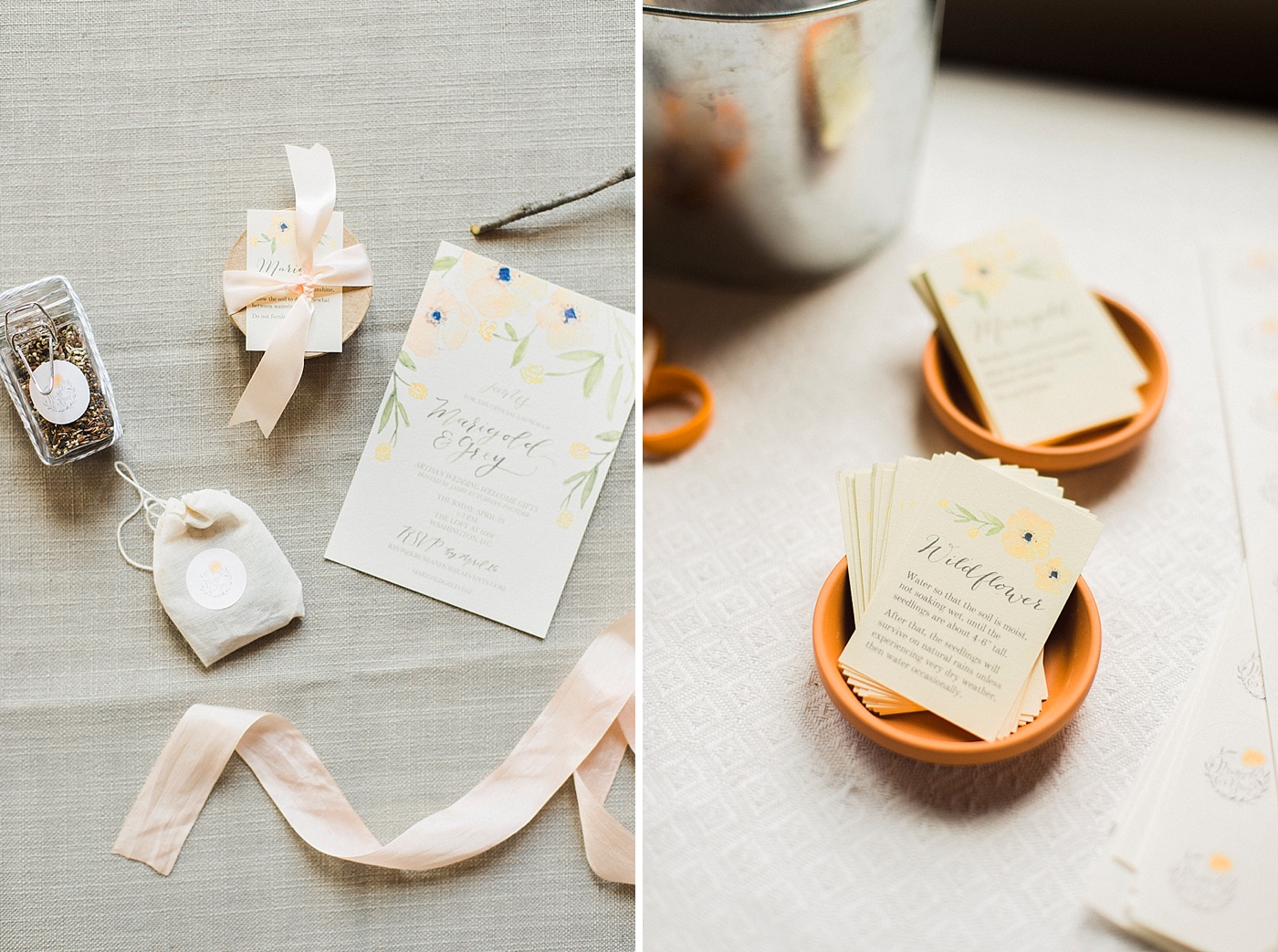I learned a TON in my 11-year career in medical/surgical sales but undoubtedly the most important was the art of the so-called “elevator pitch.” Prior to starting my welcome gift business, my days were spent in a pretty hard-core sales environment, where my audience was hospital staff and surgeons who never had extra minutes to spare. Sometimes the only chance to pitch them was after being invited into the operating room with a patient asleep on the table and surgery underway. Learning to consolidate my key points into 20-to-30-second elevator pitch was absolutely critical to my success.
You may be saying to yourself, “Well, I’m a creative so this doesn’t apply to me.” Or, “I just rebranded and have a gorgeous website that my clients love, so I don’t need to be sale-sy”. Or, “I get tons of leads from Instagram so I never make pitches in-person.” But after existing in the corporate world and now successfully crossing over to the creative world, I’m here to emphatically say that YOU are the single most important factor in determining the sales success (or failure) of your business.
As a creative, you have an advantage over most. You were born with a gift. Whether it’s floral design or calligraphy or event planning or watercolors or fine art photography or blogging or something else. It’s what makes you who you are and the story behind your unique gift is your biggest selling point. So, how do you get your message across and leave people wanting more?
Without further adieu, here are the key ingredients to mastering the elevator pitch, written with my fellow creatives in mind!
A Clear & Concise Elevator Pitch
What IS your business? When you’re a business owner and you’re madly in love with your company, it can be painful choosing just a few key points to mention when you’re faced with a spur-of-the-moment chance to pitch to someone. This is why practice is essential. Jot down the concept of your business in a few short sentences. Address the problem that your business is solving for the market. Avoid terminology that’s only used in your specific industry. Make sure that a random person off the street could understand what you’re talking about. Once you have the message down, practice it in front of the mirror until it becomes almost second nature. Practice until you’re no longer nervous. Practice until you no longer say “umm” in between your words. Make sure there is enthusiasm in your voice and that the passion you feel for your business comes through. And by the way, it’s okay to smile and make eye contact!
Example: Hi! My name is Jamie and I own the DC-area company Marigold & Grey. We’ve created an online platform allowing brides, grooms and wedding planners to design their own wedding welcome gifts. (You know, the gifts couples leave for their out-0f-town guests upon checking in at the hotel). We also offer Concierge Service to include custom gift design and hand-delivery service.
Competition
What differentiates you? By competition, I don’t mean that you should refer to your competition by name nor should you disparage them in any way in your pitch. (#CommunityOverCompetition is alive and well, my friends!) Instead, know your competition and exactly where your business fits within your market. This will help you articulate how you’re different and what makes your business stand out from the crowd. It also prepares you in case the person follows up with industry-related questions. The last thing you want is to be caught off guard or seem like you operate your business in a vacuum.
Example: We’d like to think we’re revolutionizing the once tedious process of creating welcome gifts by turning it into a modern, convenient shopping experience without our clients sacrificing quality or uniqueness.
Curiosity
What’s your ‘why’? The first thing I do when I visit a website I’ve never been to before is read the “About Us” page. There’s just something about seeing the owner and learning their story that excites me. It takes everyday products and services and makes them immediately more interesting. If I see the products and they’re extraordinary, I then want to learn more about the owner even more. For example, for my business, I can buy ribbon anywhere. But it just feels better buying when there’s a special story behind why the owner took a chance and started their company. The same goes for your audience. In 30 seconds or less, get your audience interested in not just your products or services but interested in YOU. Maybe they’ll ask for your card. Maybe they’ll know someone who needs your services. Maybe they have some in-depth questions. Either way, I promise you that your elevator pitch will yield far more results if you tell the story of YOU.
Example: I decided to leave the corporate world behind to start the business when I recognized the need for boutique welcome gift service while struggling with my own welcome gifts back in 2012. I thoroughly enjoy helping engaged couples and planners by taking the stress of welcome gifts off of their plates in the weeks leading up to the wedding!
In addition to mastering the elevator pitch in-person, you can also apply these same principles to your other methods of communication. For example, does your email signature include your tag line or brief description of your business? Are your social media profiles clear and concise, yet inspiring? Have you constructed an email using your pitch to proactively introduce yourself to potential clients or vendor partners? Once you’ve nailed down your pitch, use it to your advantage whenever and however you can.
You’re the very best asset your company has and will ever have. Now, go spread the word!





